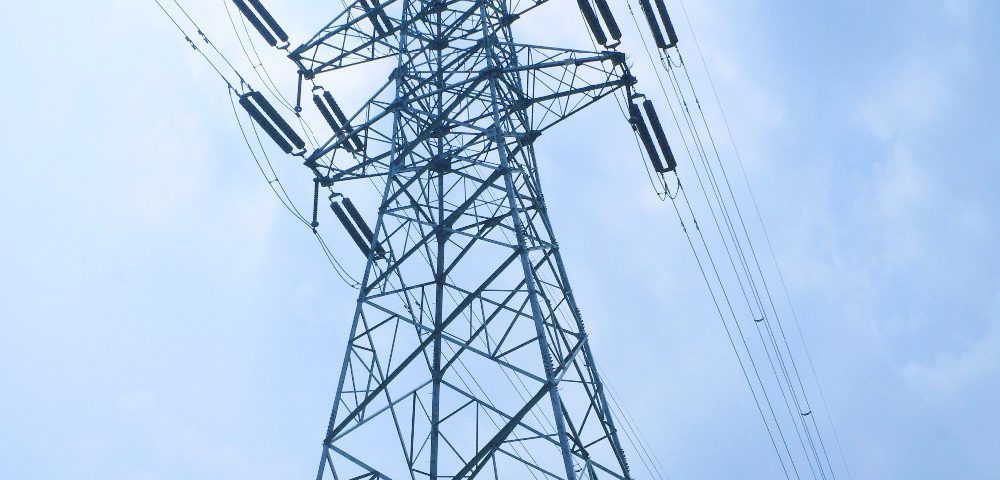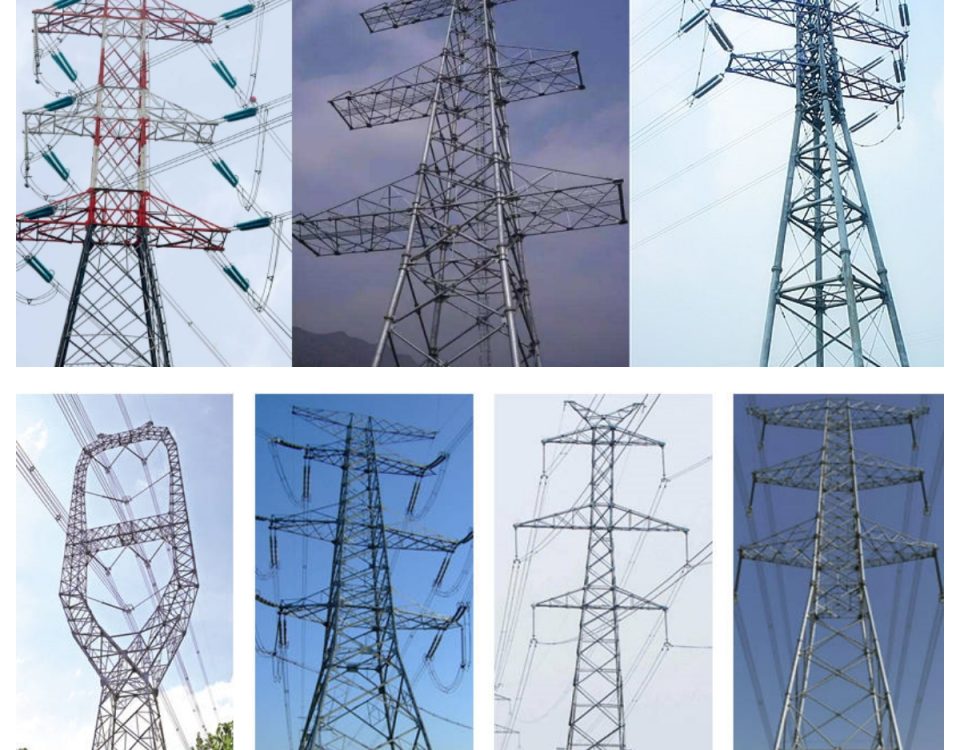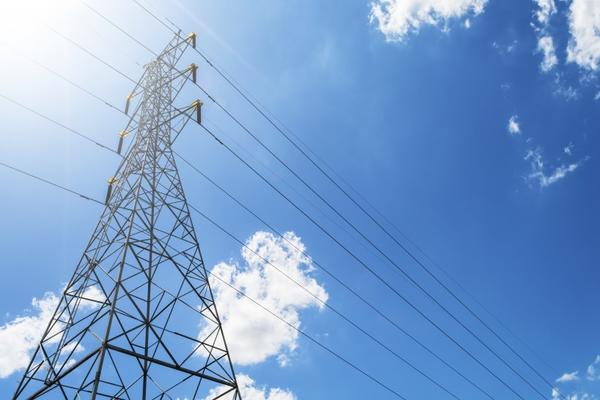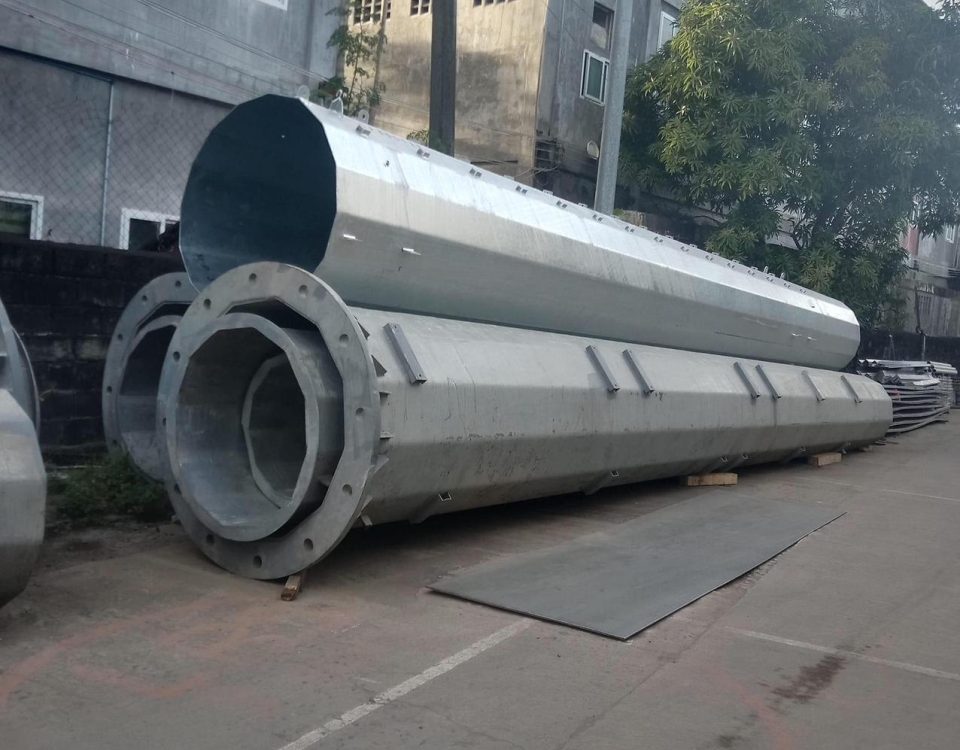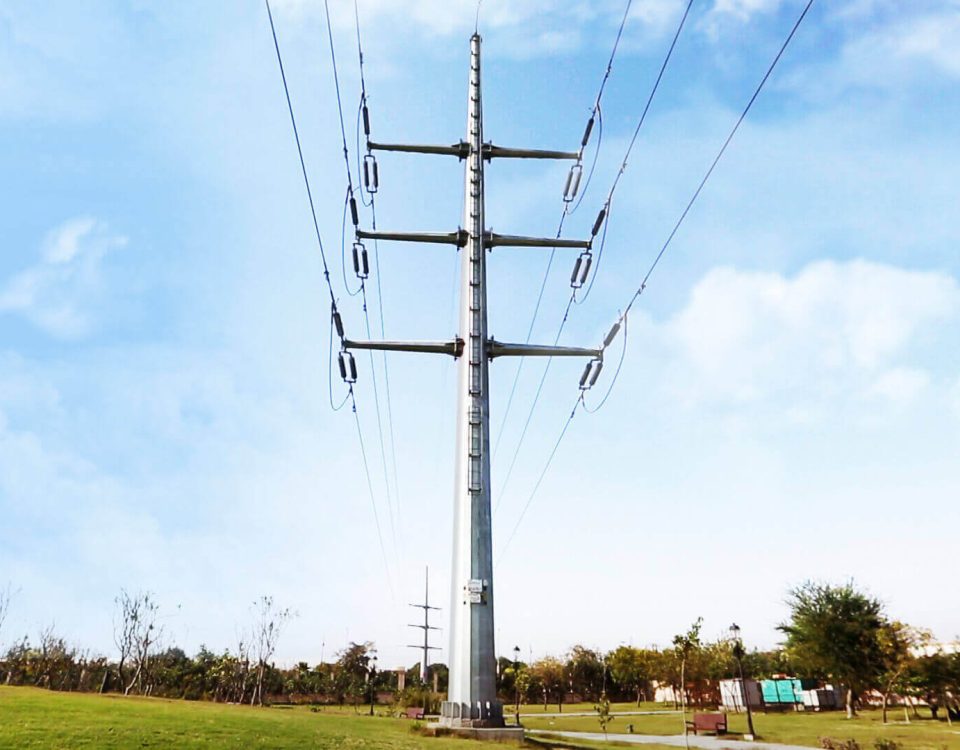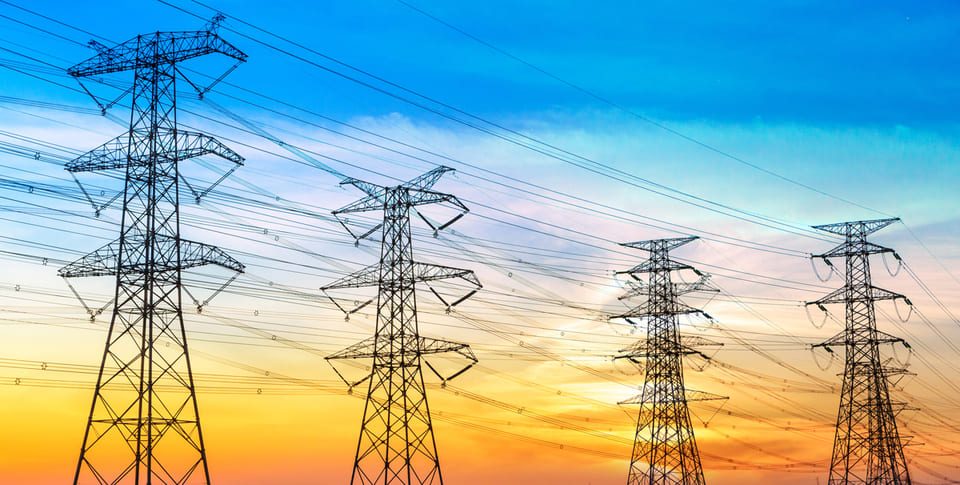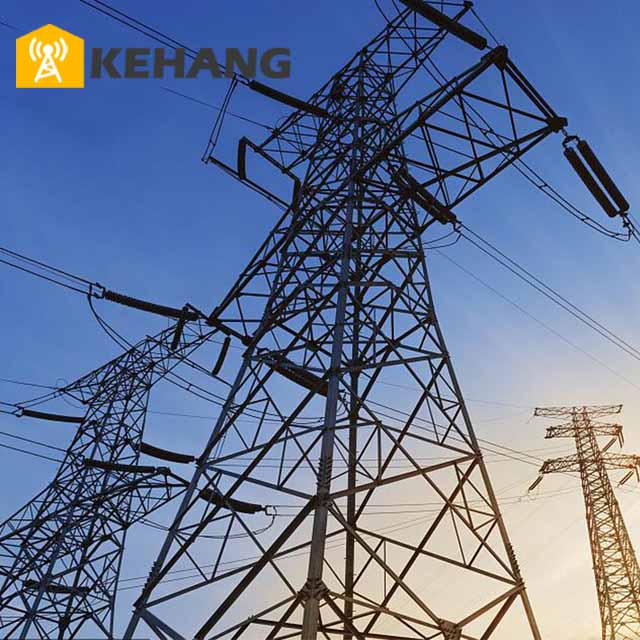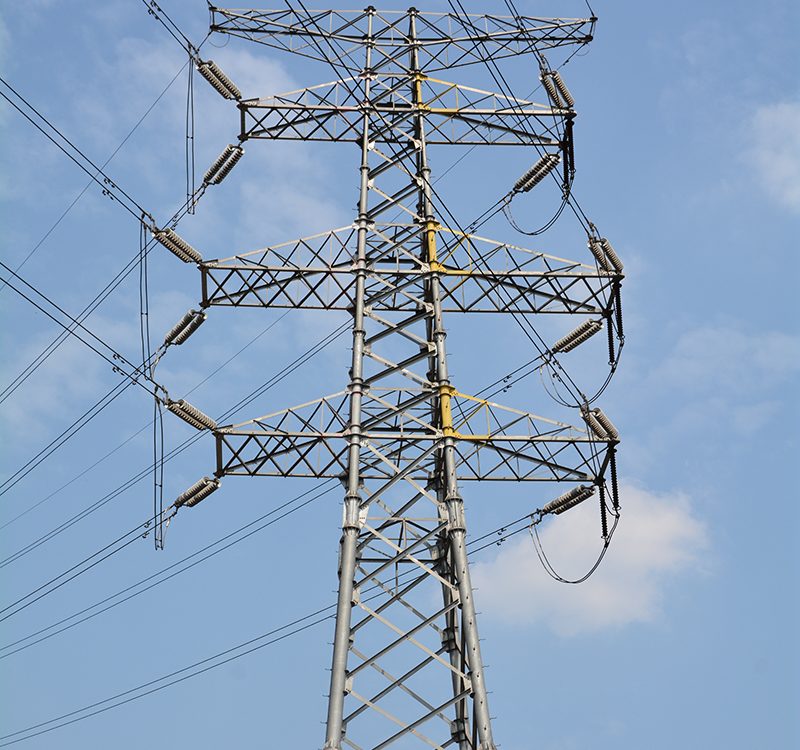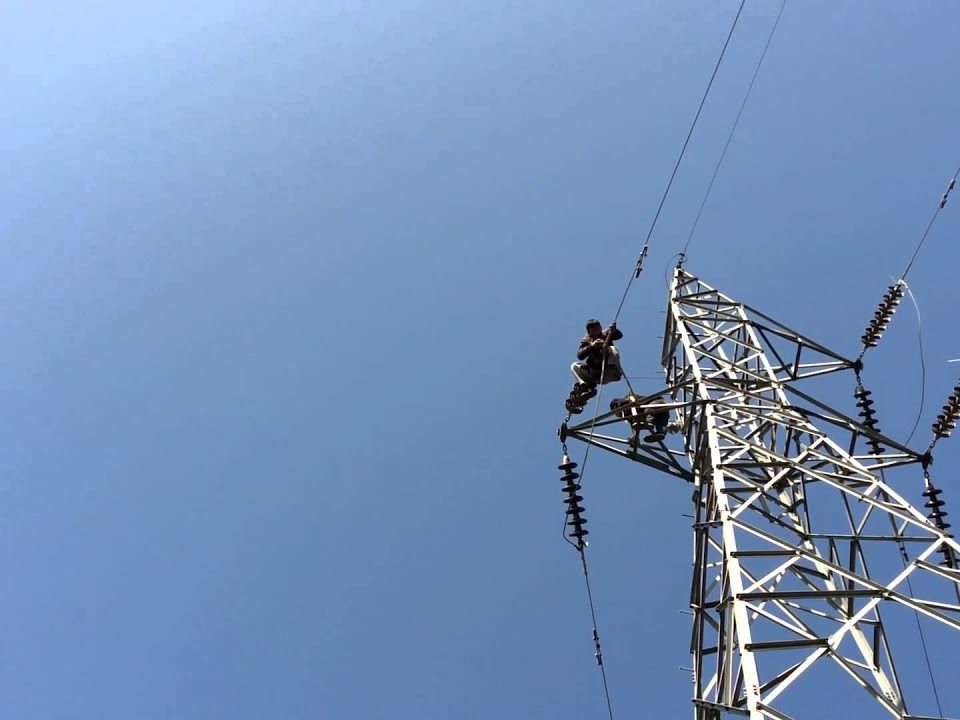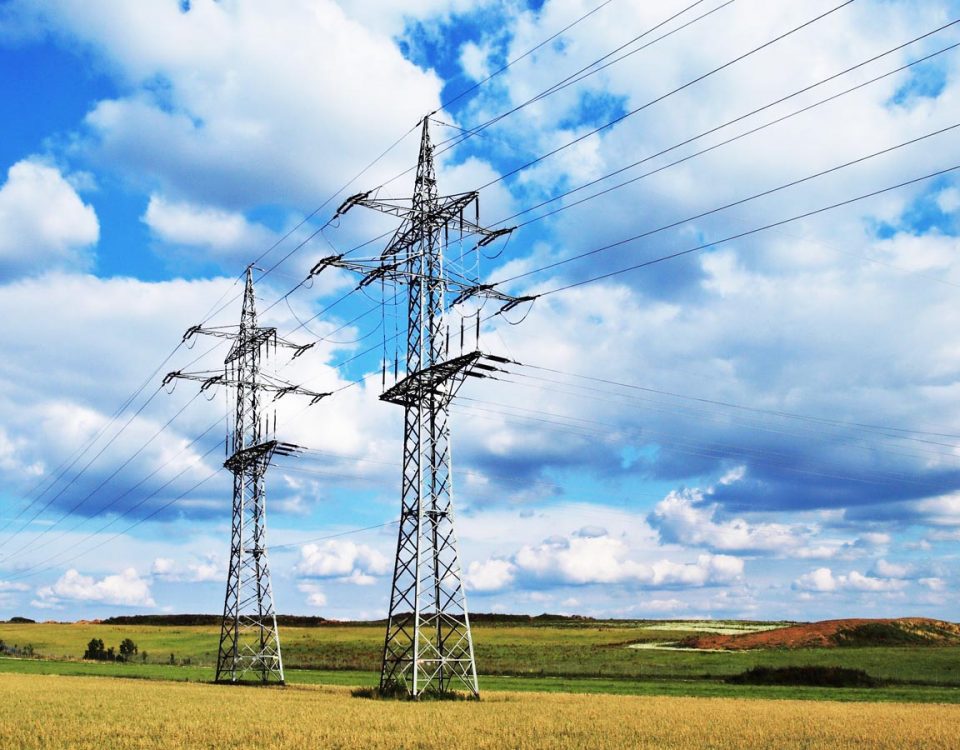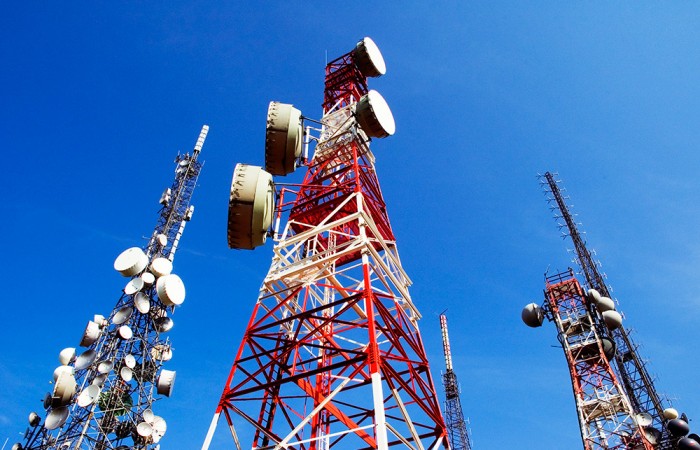
Cellular Phone and Base Station for Communication
August 17, 2018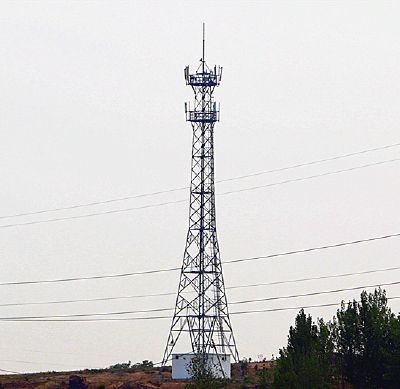
Microwave Communication Towers, Angle steel tower
August 21, 2018overhead double circuit 200KV transmission line tower
An overhead power line is a structure used in electric power transmission and distribution to transmit electrical energy along large distances. It consists of one or more conductors (commonly multiples of three) suspended by towers or poles. Since most of the insulation is provided by air, overhead power lines are generally the lowest-cost method of power transmission for large quantities of electric energy.
Transmission structures are the most visible component of transmission lines. Transmission structures come in many different designs, but two common types are:
Lattice Steel Towers (LST) consist of a steel framework of
individual structural components that are bolted or welded together.
Tubular Steel Poles (TSP) are hollow steel poles fabricated either
as one piece or as several pieces fitted together.
Conductors (“wires”) are comprised of materials that readily conduct electric current. Conductors used in transmission lines are usually aluminum placed over a steel core for reinforcement. Transmission line conductors are not insulated; insulation is provided by the air.
Conductors are connected to towers via insulators that support the conductors on the tower. They must withstand normal operating voltage and surges due to switching and lightning. Insulators have commonly been comprised of porcelain or toughened glass, which need routine cleaning to eliminate dust build-up that can lead to insulator flashover and noise. Newer insulators are composed of polymer or silicon, which are lightweight and shatter-resistant. There are two common
types of insulators:
Horizontal post-type, which supports the conductor to the side of the structure.
Suspension-type, which suspends the conductor below the structure (see photo below).
A circuit is made up of three phases (for alternating current). Towers can carry one or more circuits, depending on the design (e.g., single-circuit vs. double-circuit towers). For voltages up to 200 kV, a phase is typically a single conductor
(3 wires total per circuit). For voltages over 200 kV, bundled conductors are often used to increase the current-carrying capability of the line and reduce power loss. Bundled conductors consist of two or more conductor cables connected by non-conducting spacers. 220-kV and 500-kV lines often have two conductors per phase (6 wires total per circuit).
Construction
Overhead power line in Gloucestershire, England.
A man working on powerlines in Nauru (2007)
Towers for support of the lines are made of wood (as-grown or laminated), steel or aluminum (either lattice structures or tubular poles), concrete, and occasionally reinforced plastics. The bare wire conductors on the line are generally made of aluminum (either plain or reinforced with steel, or composite materials such as carbon and glass fiber), though some copper wires are used in medium-voltage distribution and low-voltage connections to customer premises. A major goal of overhead power line design is to maintain adequate clearance between energized conductors and the ground so as to prevent dangerous contact with the line, and to provide reliable support for the conductors, resilience to storms, ice loads, earthquakes and other potential damage causes.Today overhead lines are routinely operated at voltages exceeding 765,000 volts between conductors, with even higher voltages possible in some cases.
A single-circuit transmission line carries conductors for only one circuit. For a three-phase system, this implies that each tower supports three conductors.
A double-circuit transmission line has two circuits. For three-phase systems, each tower supports and insulates six conductors. Single phase AC-power lines as used for traction current have four conductors for two circuits. Usually both circuits operate at the same voltage.

